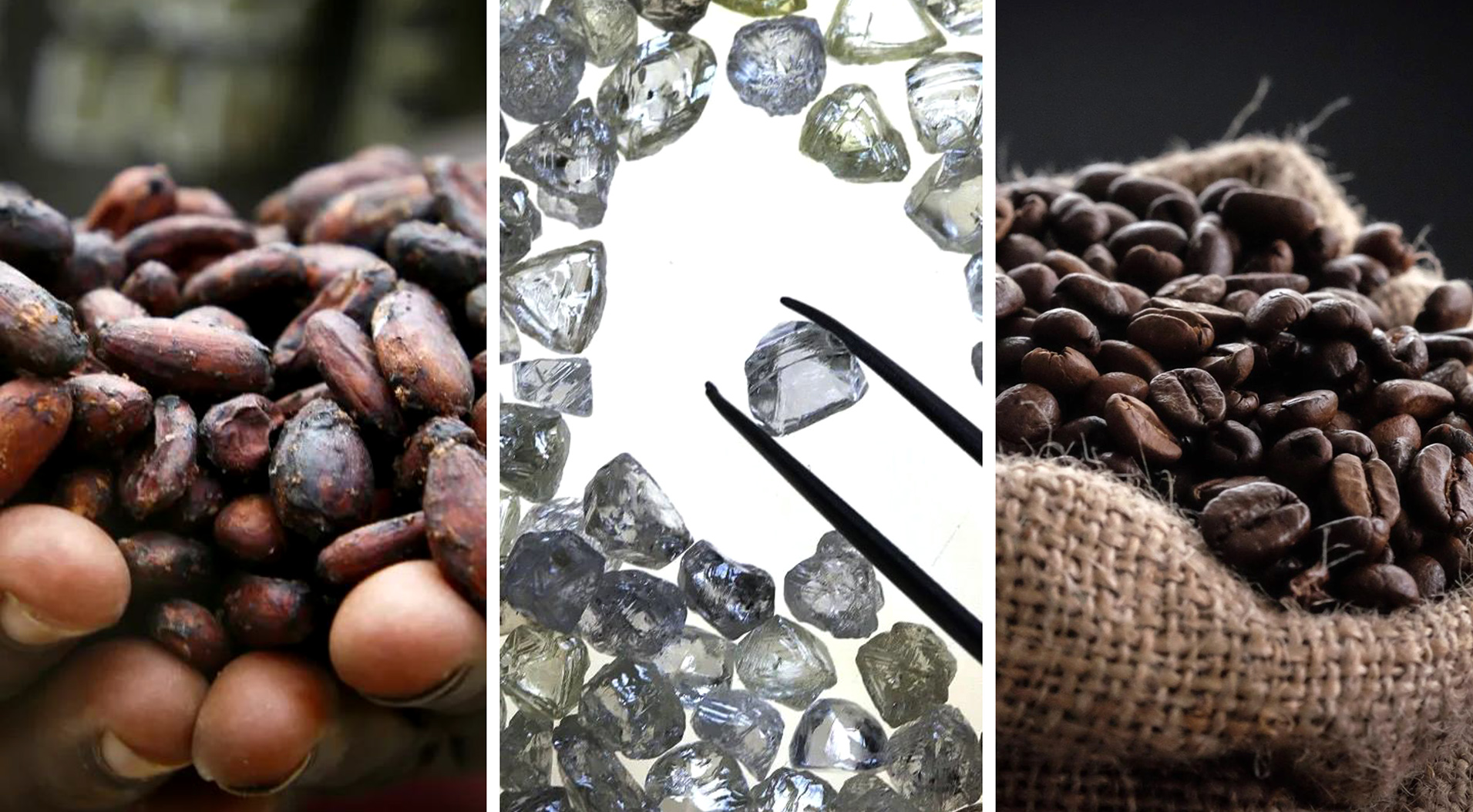What do diamonds, cocoa and coffee have in common?
Well, these commodities can all be grown in a lab, and one of the driving forces behind this trend has been inflation, which has ravaged the global economy in recent years.
Inflation refers to price growth, but it is also leading to the rapid growth of diamonds, cocoa and coffee in labs.
To wit, De Beers has reportedly amassed a stockpile of $2-billion worth of diamonds — its largest since the global financial crisis of 2008 — as rough diamond sales have tanked. De Beers has basically mined and produced way more diamonds than it can sell.
There are a number of factors behind this state of affairs, including the still fragile economic recovery in China — a key and once flourishing market.
Natural diamond producers are also confronting the existential crisis posed by gems grown in the lab. And the bottom line is that the lab versions are much cheaper than the natural product.
A recent report by analysts at McKinsey titled The Diamond Industry is at an Inflection Point states:
“... the massive success of lab-grown diamonds (LGDs) has reduced prices for natural stones well beyond what the mining industry had expected, driven largely by consumers who want more affordable options. LGDs could take over the majority of the market outside niche luxury segments, similar to collecting classic cars or luxury vintage items.”
The initial applications of LGDs were industrial: they were used as drill heads and for cutting and polishing rough diamonds. But they are now competing directly with their counterparts, and their 80% discount makes them a steal.
Cocoa prices almost tripled in 2024
The current generation of younger consumers has never really experienced inflation, a genie that had been bottled up for decades. Its uncorking has unleashed demand for cheaper alternatives across the board, including for cocoa.
In 2024, cocoa was the best-performing commodity by a long shot, with its price almost tripling over the course of the year in the wake of crop failures in Ivory Coast and Ghana, which between them account for 60% of global production.
Those failures were caused by a one-two weather punch: a deluge in late 2023 triggered by an outbreak of black pod disease, which was followed quickly by a scorching drought linked to El Niño.
Read more: Chocolate bite — El Niño-linked West Africa weather drives cocoa prices to record highs
At about $11,100 per ton, cocoa remains near its record peaks and is over four times what it was two years ago. And unlike diamonds, there is no swelling stash of the beans: according to the International Cocoa Organisation’s latest monthly report, stock levels at the London exchange fell 20% in November, while in the US there was an 11% fall over the same time frame.
Hedging helped to contain the full impact of this on retail prices for chocolate, but prices are expected to surge 30% globally in 2025 because of the deficits which could worsen as hotter-than-normal weather has raised concerns about this year’s crop.
Manufacturers simply cannot absorb these costs and consumers are bearing the brunt.
Lab-grown cocoa alternatives
One upshot is that chocolate makers are turning to lab-grown cocoa alternatives.
Mondelēz International — the maker of Oreo and Cadbury bars — is among the funders who last month put $4.5-million into start-up Celleste Bio. Making use of cell culture technology, it claims it can grow natural cocoa from just one or two beans.
“Our three-pronged model combines BioTech, AgTech and AI to produce 100% natural cocoa ingredients at scale, anywhere in the world. Without cutting down a single tree,” Celleste Bio says on its website.
The environmental imperative here is to conserve the rainforests of west Africa, but the soaring costs of cocoa are clearly the rationale behind Mondelēz International’s investment.
Celleste Bio is hardly alone in this game.
California Cultured, a plant cell culture company, also grows cocoa from cell cultures, as well as coffee. It uses condition-controlled tanks to precisely mimic the rainforest environment that cocoa and coffee beans require.
Coffee prices have also been on the boil because of poor crops in Brazil and Vietnam, and both coffee and cocoa take several months to grow. By contrast, California Cultured’s coffee and coca cells can be harvested, fermented and roasted in three to four days.
There are many other examples along these lines.
The fibreglass story
After rhodium prices hit record highs of close to $30,000 an ounce in 2021, Chinese chemists applied their minds to find ways to replace it with platinum in the manufacture of fibreglass. A key alloy in the making of fibreglass used a mix of 80% platinum and 20% rhodium.
The Chinese fibreglass makers got that to 95% platinum, undermining the price of rhodium which has since collapsed in a heap along with other platinum group metals (PGMs). And the South African PGM industry remains in dire straits partly as a result.
Read more: On the sly, Chinese chemists have eroded SA’s PGM industry
But the makers and buyers of fibreglass have been winners.
All of these experiments in the lab have been cooked up in response to prices — in short, inflation.
Inflation is a wealth-sapping scourge that typically extracts a higher toll as you descend the income scale.
But one of its silver linings is innovation. And many more such developments that we have never dreamed about are no doubt looming on the horizon. DM





